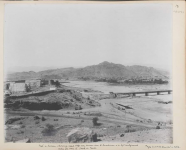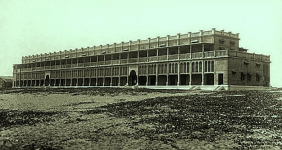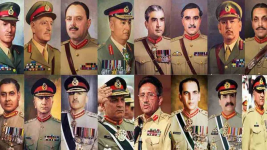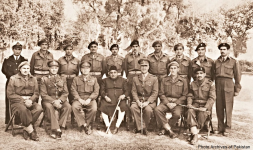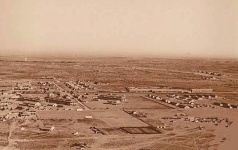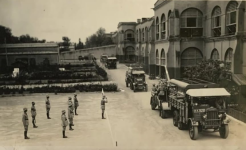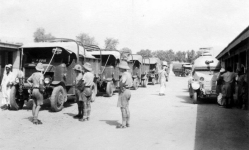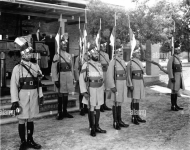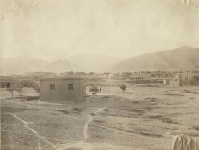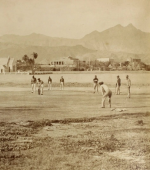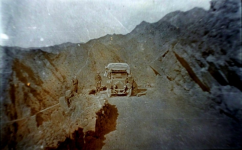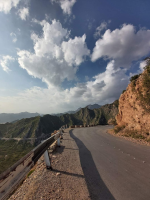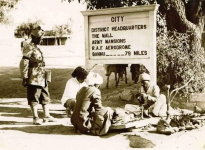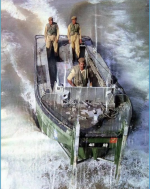In the east of Korakoram range of Himalaya, to the North East of NJ 9842, lies the coldest hell on earth. A 76 Kilometers long mass of rock solid snow, having the minimum altitude of 20,000 feet or 6,000 meters; this area has the coldest and most fearsome climate on earth. It is called the third pole on earth or in the words of native language of the area, it is referred as the Black Rose or Siachen.
Bordering the area of Pakistan and India in the sector, this is a bone of contention of between two countries. Unlike the beautiful landscape and winsome northern areas of the country, even the name of this sector gives chills in the spine; what to say of its horrific landscape.
This area has the most brutal and harsh weather of the region. In winter, the temperature drops up to -50 degrees.
The wind speed is around 160 KMPH, which creates wind chill factor, dropping temperature even lower. In the hottest months of June and July, the temperature is around -2 degrees. Crevices, steep slopes, and the cracks covered by a thin layer of snow which can not support the weight of an average person, collapse all of sudden, taking the person stepping to its depth. Not only causing mortality or severe injuries that is even worse than death in such a climate. The avalanche is the most horrific nightmare of the person present here. Verily major part of Siachen hasn't been treadled by any human, since the creation of the world.
Seeing through military point of view, this area is the toughest position ever for a soldier. Here the lowest post has to be established on the minimum altitude of 21,000 feet or 7,000 meters. The highest post in this sector is about 22,000 feet high. This difference of 1,000 feet has a saga of labour and bravery in it to cover. On such a height, a human requires surely to be a superhuman.
Although a soldier to be posted here must go through a training of a short period a Gilgit in order to be deployed here, but this sudden change of altitude has sudden impact of a human.
Acute depression, diminished appetite, sleep disorder, memory loss, hallucination, frost bite, hypoxia and white-out after seeing the white colour of snow for several days are enemies of a soldier. Above all this, high altitude sickness, pulmonary or cerebral edema are common as well.
Frost bite is the worst a soldier can expect. A little bit of sweetening or moisture can cause a frost bite. Any limb hit by frost bite has to be amputated on immediate basis, or it is the cause of death for the affected.
In such a thin air, the intensity of the most vital factor oxygen is decreased; handicapping a person to do even the most common chores of life. In a post established in a fiber glass igloo 6 to 7 Jawans are kept, including ORs and an officer. Here the tin food is the source of nutrition for the soldiers. Having a cook among is the biggest blessing for them.
However, cooking is also a challenging task here. Freezing cold in addition to the lack of oxygen makes cooking difficult. Eating the food is another difficulty here because not only the diminished appetite but also the deficiency of oxygen. It is difficult to walk a few paces in a cold atmosphere, as it is a laborious job to do in such a climate.
Even drinking water is not so easy here. A person has to constantly man the stove, where the snow is being melted, in order to make water. However, drinking water may shed body temperature, so the drinking amount is kept to minimum. It results in the thickening of blood. So, Dispirine is consumed like sweets here, just to keep the blood thin.
Otherwise, it may result into any severe medical condition. Ironically, the soldiers on the Siachen are sitting on one of the largest water reserves on earth.
In case of any casualty or injury, waiting for the helicopter is the most important activity to be done here. However it also depends on the situation and clarity of weather to make the trip, otherwise it is delayed for an undefined period. An officer serving in Siachen told that one of his Jawans passed away because of weather.
Due to the limited area available around the igloo he could not be buried nearby and it was not considered suitable to bury the body far away from the post as being spotted in the area could alert the Indians and locating the post would not have been difficult. Although the body could be shifted easily by the helicopter but the thick blanket of clouds on the sky was intimating that its impossible. Keeping the body outside the igloo was not only a disrespect for the martyred comrade but also being lost if there was any snow storm in the area. It was expected to have a storm in a couple of hours. So, the body was kept inside the igloo and the officer insisted the body to be kept alongside his bedding.
The storm broke out and kept the area surrounded for 2 weeks. All these days, the fallen comrade was kept inside the igloo with his fellows. However, the deficiency of oxygen which causes neural functions of the body to work inefficiently, made soldiers believe that their fellow is alive and present with them, having a chit chat as well. However, this ended when after a period of 2 weeks, the storm ended and the casualty was taken by the helicopter.
Sun which is a sign of life for earth isn’t very gentle here as well. Although the altitude brings the temperature to a minimum level but rays of sun directly hit the objects present here, including humans. Intensity of sun rays is very low here but even the minimum amount of sunshine is dangerous. Without the anti glare glasses, it is very difficult to see here even causing to damage the eye sight partially. If faced for a long time, it might be fully. Because when the sun rays hit the snow, the snow particles act as tiny mirrors, reflecting the sunlight to one another, increasing the sun light to a very high and unbearable level.
The effect can be seen by facing the sun burnt skin or the uniform of the soldiers. When posted to Siachen, the colour of uniform is as white as snow, but after spending time here is starts taking shades of grey every day. Darker the grey is, longer the stay of the soldier on Siachen is indicated.
The handling of weapon is a challenge for the soldier. Unlike the plains or lower mountains where one just grabs a firearm and starts shooting is not a luxury which can be enjoyed in siachen. If touched with the bare hand, even the slightest moisture in the air causes the hand to cling to the metal and cause the skin to peel off.
Supplies play a vital role to keep the soldiers alive an equipped. A place where Aspirine and kerosene oil are needed every minute and required to stay alive, supplies must reach timely, otherwise a delay of minutes can cost years.
The speediest way is to drop supplies by helicopter or the airdrop by C-130 to some specific drop zones, near the posts. From where it is carried by the soldiers to the relevant point. But this is not such a simple task to be done. Drop zones are mostly on the lower ground while the posts are on the higher level.
Carrying the weight in such a climatic condition even to a minimum level is such an uphill task. Most of the time when porters reach the post, their blood is also seen on the canvas belts carrying the burden. Moreover, if the drop zones are marked by the enemy OP, the artillery fire not only destroys the supplies but also causes casualties by the enemy fire. Finding a safe drop zone or the route is another challenging task.
Sicahen is verily the god forsaken place, where the well-equipped well prepared enemy looks like a midget who can miss its shot. While the gigantic enemy is nature which never misses its shot. Every day, every minute, even every new second is a new challenge.
Our Heroes need their identity back. 30,643 likes · 159 talking about this. کبھی جو تمہیں میری ماں ملے تو اْس سے کہنا وہ اب بھی ہنستی رہا کرے کہ شہیدوں کی مائیں رویا نہیں کر
www.facebook.com

